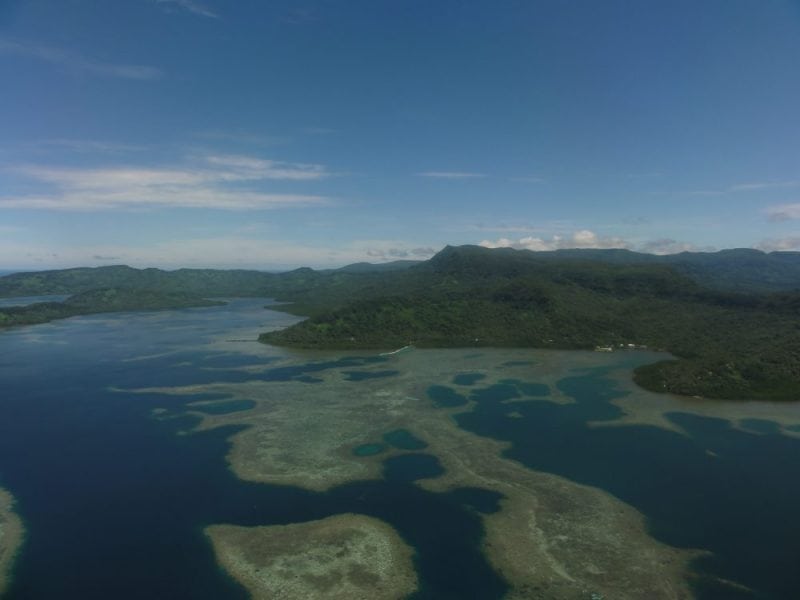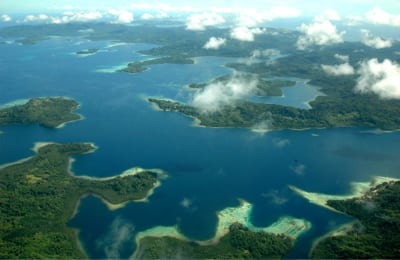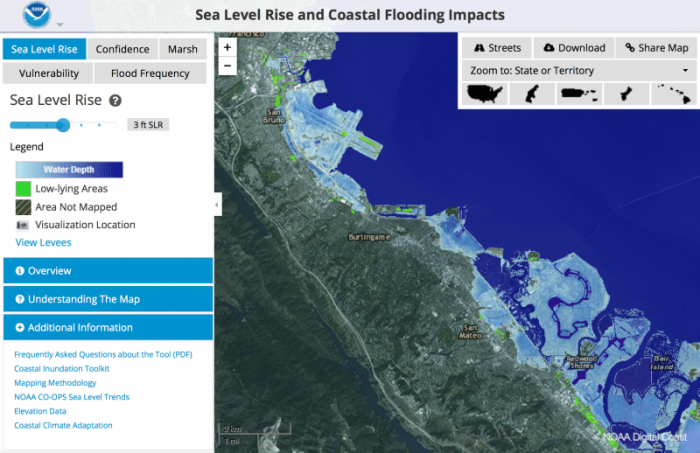
Global climate change represents what may be the single biggest threat to modern society and our way of life. Climate change represents such a major upheaval to our current way of life that many experts even argue that people should stop having children. One of the most pronounced effects of climate change is the melting of ice currently found in glaciers and ice caps on land, which leads to a substantive rise in global sea level. While some effects of climate change are just predictions at this point, sea level rise has been observed and documented for decades. Truthfully, not only is the sea level itself increasing, but the rate of sea level rise has also been rising.
The quickening rise in sea level represents a substantial danger to the island and coastal communities. The recent sea level rise has swallowed entire islands in the Pacific and threatened many seaside cities and towns.
The Sinking of Micronesia
Micronesia, a collection of islands in the west Pacific near New Guinea, is in the process of disappearing into the ocean. Last year saw five uninhabited islands submerge beneath the rising sea, and six inhabited islands suffered massive damage as large areas of land sunk underwater. This trend is continuing, and a new study done by Australia’s Sustainability Research Centre has found that even more islands were washed away beneath the ocean.
Patrick Nunn, Associate Director of the University of the Sunshine Coast explained that his team recently conducted a coastal survey of Micronesian islands. They also gathered more data by interviewing local citizens and comparing different satellite images of the island of Pohnpei and surrounding islands. According to Nunn, a historical island called Nahlapenhold was one of the casualties of sea level rise.

Photo: By Jim Lounsbury – Wikipedia, Copyrighted Free Use for any purpose, https://commons.wikimedia.org/w/index.php?curid=9403460
Explains Nunn:
This island was so large that in the year 1850 it was the site of a pitched battle; some stories recall that fighters hid behind coconut palms to avoid musket bullets. But today, there is no sign of Nahlapenlohd, not even a mound of sand marking where it once was.
Nunn says that sea level rise is threatening many of the remaining islands in Micronesia. Even the islands that still remain have been dealt a heavy blow by erosion, with the island of Nahtik having lost 70% of its landmass since 2007. Meanwhile, the island of Ros has lost at least 60% of its land. Nunn thinks the exact mechanism behind the fast erosion is the Brunn effect, a process by which the rising sea removes sand from the upper part of a beach and deposits it offshore.
There is some suggestion that forces other than climate change may be contributing to the rate at which Micronesia is disappearing, as trade winds seem to be driving a large amount of water into the western Pacific. However, the recent intensification of trade winds could be linked to climate change.
The Implications of Sea Level Rise
Regardless of whether or not the sea level rise is due exclusively to global climate change, or partly due to natural causes such as trade winds, the damage done to Micronesia is a glimpse of the future to come if climate change continues unabated. Sea levels have increased around three inches total in the past 20 years, or about 1/8 of an inch a year, a rate which is greater than the past 2800 years of sea level rise. A three-inch rise in seawater may not seem like much, but even small rises in sea level can have horrendously damaging effects on coastal communities and habitats. Erosion and wetland flooding can destroy fragile coastal habitats, and hundreds of millions of people currently live in areas vulnerable to slight increases in seawater, particularly in low-lying places of India.
Land ice melting is the primary cause of sea level rise, as opposed to the expansion of water due to increased heat. A feedback loop is also responsible for the rate of sea level rise, as while snow and ice tend to reflect solar radiation back into space, seawater absorbs much more solar radiation which causes the globe to warm further. If global warming continues on its current trajectory, experts estimate that the sea level could rise up to 6.6 feet or 2 meters by the end of the century.
If sea levels continue to rise at this rate, by 2100 large parts of the United States could be underwater. There are maps which show how estimated sea level rise would impact different areas of the globe, and provide an insightful and terrifying visualization of the problem. According to the estimates, cities on the west coast would suffer terrible flooding, and most of Florida, as well as much of the East Coast, could be swallowed up by the advancing tides.

Image of Photo: NOAA Office of Coastal Management – Public Domain
Many of the effects of climate change are varied and not fully understood. Climate change impacts deep-sea ecosystems, and can even lead to the increased possibility of forest fires in sub-arctic regions. The exact system behind these effects is still under investigation, but unlike some of the other predicted effects of climate change sea level rise is well documented and explained. The solution to the problem is known as well, reduce greenhouse gas emissions and prevent global temperate increase.
Combating Climate Change
To mitigate as much damage from sea level rise as possible, emissions of greenhouse gases must be rapidly cut. If countries around the world adhere to the tenets of the Paris Accord, global temperature increase would be kept under two degrees Celsius and the melting of the West Antarctic Ice Sheet would be kept at a minimum.
The prospect of all countries choosing to cut their emissions seems slim, however, as the Trump administration has recently pulled out of the Paris accord, and the United States seems to increasingly be a place where experts are mistrusted. Both climate change and the common belief that autism is caused by vaccines seem to be evidence of this fact. That said, the decision by many state and city governments to commit to the Paris Accord even if the federal government does not is an encouraging trend. Educating and empowering citizens at the local level could be an effective way to fight climate change in the wake of federal inaction.
In the meantime, coastal cities around the world may want to put coastal resilience plans in place to deal with the encroaching sea. The reinforcing of beaches, the construction of bulkheads, and the building of breakwaters and stormwalls may all be necessary for cities like New York and Boston to stave off rising sea levels.
The disappearance of Micronesian islands, whatever the cause, and the flooding of Houston brought on by Hurricane Harvey offer glimpses into what the world could be like a century from now if climate change is not fought with all our power.









